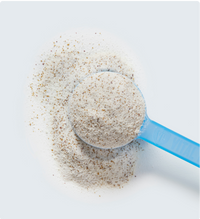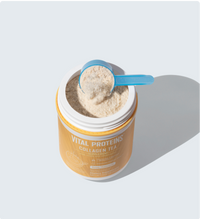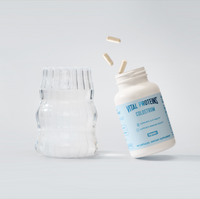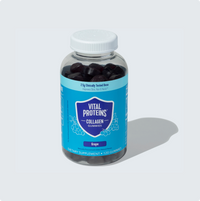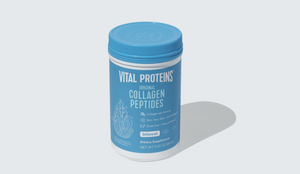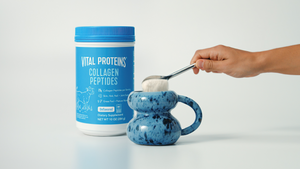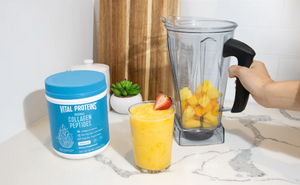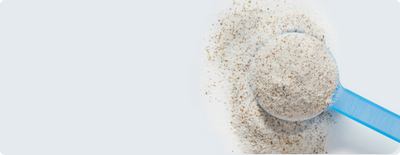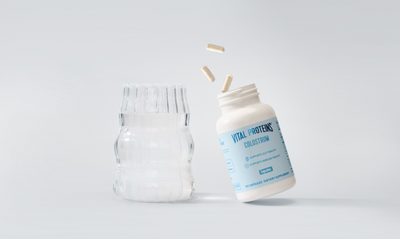By: Lauren Gleisberg
Every month, we introduce a new Guest Editor to share his or her musings on wellness, beauty, lifestyle and beyond. This month, we invited wellness guru Lauren Gleisberg to take part. Keep reading for her essay on postpartum anxiety.
Despite the stresses and struggles of caring for a newborn, I adjusted quite well to becoming a mom to two kids under the age of two. My son, Leo, was 1 1/2 at the time we welcomed our second baby, Beckham.
There was a lot going on, but I felt amazing and had a strong support system.
Around 6 weeks postpartum, my “new-mom-cloud-nine high” began to wear off and that is when I first noticed myself feeling different.
I was struggling with breastfeeding and an oversupply. At the same time, I also mistakenly rushed back into working. I work for myself, so there isn’t a traditional maternity leave. I love what I do, but it quickly became a lot to deal with.
I was aware of the symptoms of postpartum depression, but I didn’t feel the emotions one would assume depression feels like.
In fact, I felt quite happy. However, the overwhelm was immense. It felt like there was a huge weight sitting on my chest. At times, I could feel it coming on like a wave. It would physically consume me. My anxiety level would skyrocket. I became very irritable.
The nights were the worst. I was so tired, yet, even when my baby was asleep, I couldn’t sleep. My mind was constantly on, thinking about my problems, the never-ending to-do list, and how I couldn’t get any of it done.
This wasn’t like me.
Those close to me would use words like “calm,” “confident” and “go-getter” to describe me. Not now. Not this Lauren.
RELATED: I Tried Hypnosis to Treat My Anxiety & Here's What Happened

What Is Postpartum Anxiety?
Postpartum anxiety (PPA) is a separate condition from postpartum depression (PPD). This study found that PPA is actually more common that PPD, affecting upwards of 15% of pregnant and postpartum women. However, there is significantly less information and awareness on PPA.
Most new moms (70-80%) experience the normal ‘Baby Blues’ which are mild ups and downs, weepiness and stress, according to the American Pregnancy Association. These symptoms resolve on their own within a few weeks.
More severe than the baby blues is PPD, which affects 1 in 7 new moms according to the same source. Symptoms may begin shortly after birth up to a year later.
Unlike PPD where mothers may feel extreme sadness, PPA symptoms are primarily worry.
"We call postpartum anxiety the hidden disorder because so few moms recognize it and it goes undiagnosed," says Jonathan Abramowitz, Ph.D., associate chairman of psychology and director of the Anxiety and Stress Disorders Clinic at The University of North Carolina at Chapel Hill. "It hasn't been discussed or studied much, even though it's a lot more common than postpartum depression.
RELATED: Feeling Stuck? Here's How to Shake It Off
Postpartum Anxiety Symptoms
- Irritability
- Constant worrying; some worries can be irrational
- Inability to focus and think clearly
- Changes in eating and sleeping
- Feelings of dread
- Hot flashes
- Dizziness
- Rapid heart beat
- Nausea
According to Ann Smith, CNM and President of Postpartum Support International, 25-35% of postpartum anxiety cases begin during pregnancy. For others, postpartum anxiety can occur shortly after birth, or be triggered by a stressful life event or when weaning from nursing.
When I started experiencing many of the symptoms associated with postpartum anxiety, I was confused as to what was happening especially because I didn’t feel this way with my first child.
Postpartum anxiety is the loss of a normal and calm state. When you’re experiencing anxiety, you overestimate your obstacles and underestimate your ability to handle them. You second guess your decisions, and all of this affects your day-to-day life.
My symptoms became so apparent that those close to me encouraged me to call my doctor. For a while, I brushed it off thinking, “You’re stressed because you’re a mom to two little ones. It will just go away.”
When it didn’t just go away, I decided to make an appointment with my OB. I told her what was going on and that’s when she said: “It sounds like postpartum anxiety with some mild panic attacks.”
My doctor and I discussed various strategies to help with my PPA and we decided lifestyle changes were the best place for me to start.
Postpartum anxiety can range from mild to severe, and lifestyle changes alone may not work for everyone. I would encourage every woman postpartum who has these feeling that are affecting their daily life to reach out to a licensed healthcare professional.
Fast forward several months and I have my symptoms under control. There are several things I did daily to work take control of my postpartum anxiety.
4 Things That Helped Me Take Control of My Postpartum Anxiety

Understand What You’re Going Through (But Try Not to Dwell on It)
I relied on professionals, not Google, to educate myself on PPA. As a new mom, you can easily fall down the Internet rabbit hole. I educated myself on PPA, but I didn’t allow myself to obsess over it. I was intentional about PPA being something I was going through and not letting it become who I was.
Establish a Support System
In order to manage PPA, it is important to establish your own team who is there to support both your parenting and personal needs. I became even closer with my friends who had children around the same age because they best understood where I was in life. Mom groups are great for this. For emotional support for myself, I relied a lot on my own mom and my husband. I hired a reliable nanny who I could trust while I had to work.
Get Moving & Get Out
Exercise releases endorphins, which are also known as the “happy hormone.” Even if it’s a short walk around the block with your baby, moving your body does wonders for PPA.
It can seem stress-inducing to get out of the house with a baby, but it is so good for your overall well-being. The trick is to just do it! At first, I would just go for a car ride with my baby and swing through the Starbucks drive through. You quickly build confidence and find a way to resume your normal activities withyour baby.
Fine-Tune Your Social Life
During this difficult time, it was very important for me to surround myself with people, places and things that elevated my mood. This meant that I grew closer to certain people and further from others. I elected not to participate in certain social activities and prioritized others. I unfollowed social media accounts that didn’t make me feel good. Filter your life with this one question: Is this helping me or hindering me?
The Bottom Line
Worry is a normal part of parenting. Anxiety is a natural response to protecting your baby. However, when that worry and anxiety are severe enough to affect your day-to-day life, I highly encourage you to seek professional guidance.
After a few short months of making lifestyle changes, my PPA symptoms subsided. I wish I had known more about PPA before even having my baby, so I could have gotten ahead of what I was experiencing.
If you’re experiencing PPA or PPD, you are not alone and there is always a solution. It’s better to seek out professional help sooner rather than later so you can start feeling your best.
I’ve learned the best way I can care for my children is by first caring for myself. When I am operating at my fullest, I can be the best mom I can be.
Always remember… you’re doing great!
Photos: Courtesy of Lauren Gleisberg

